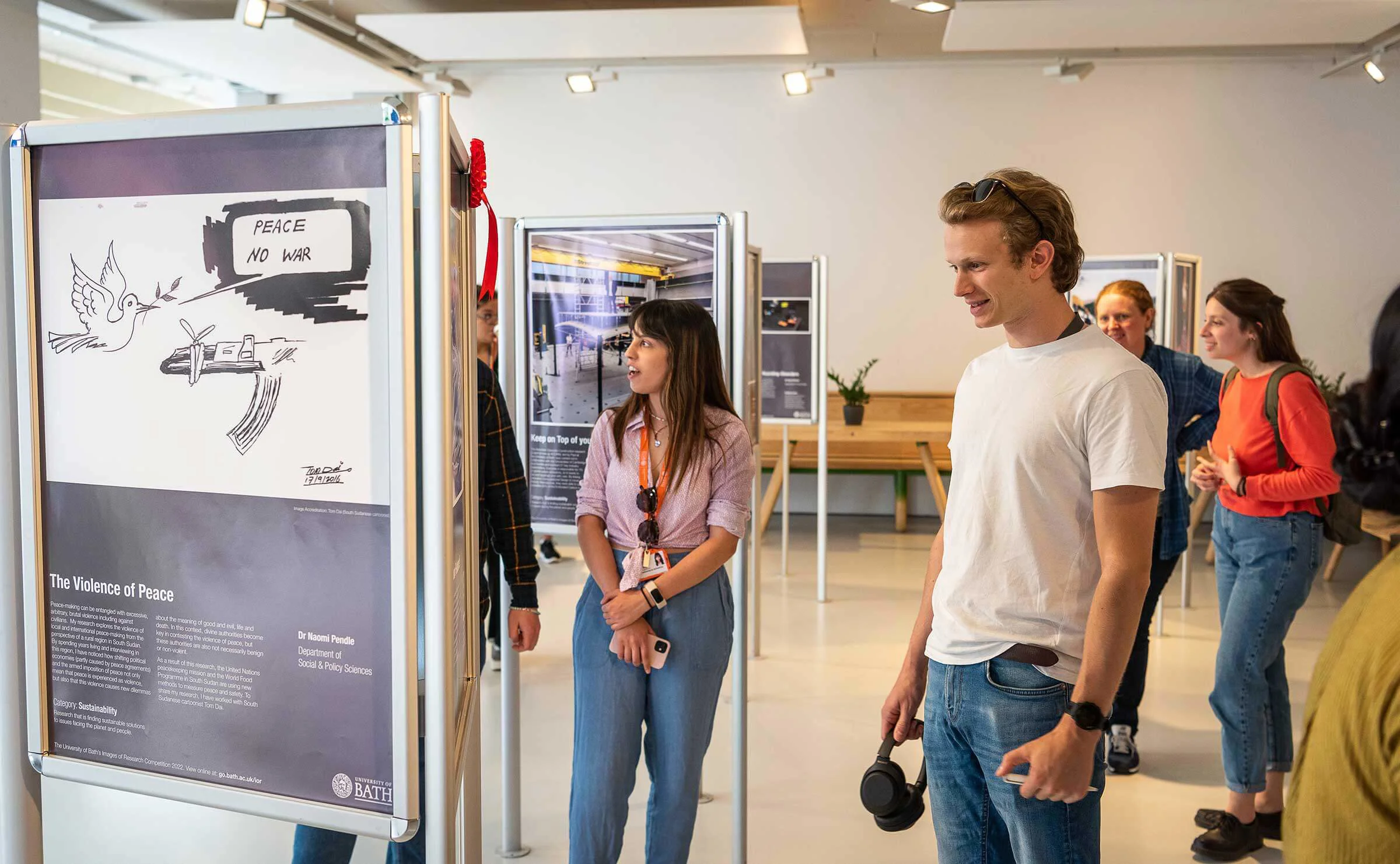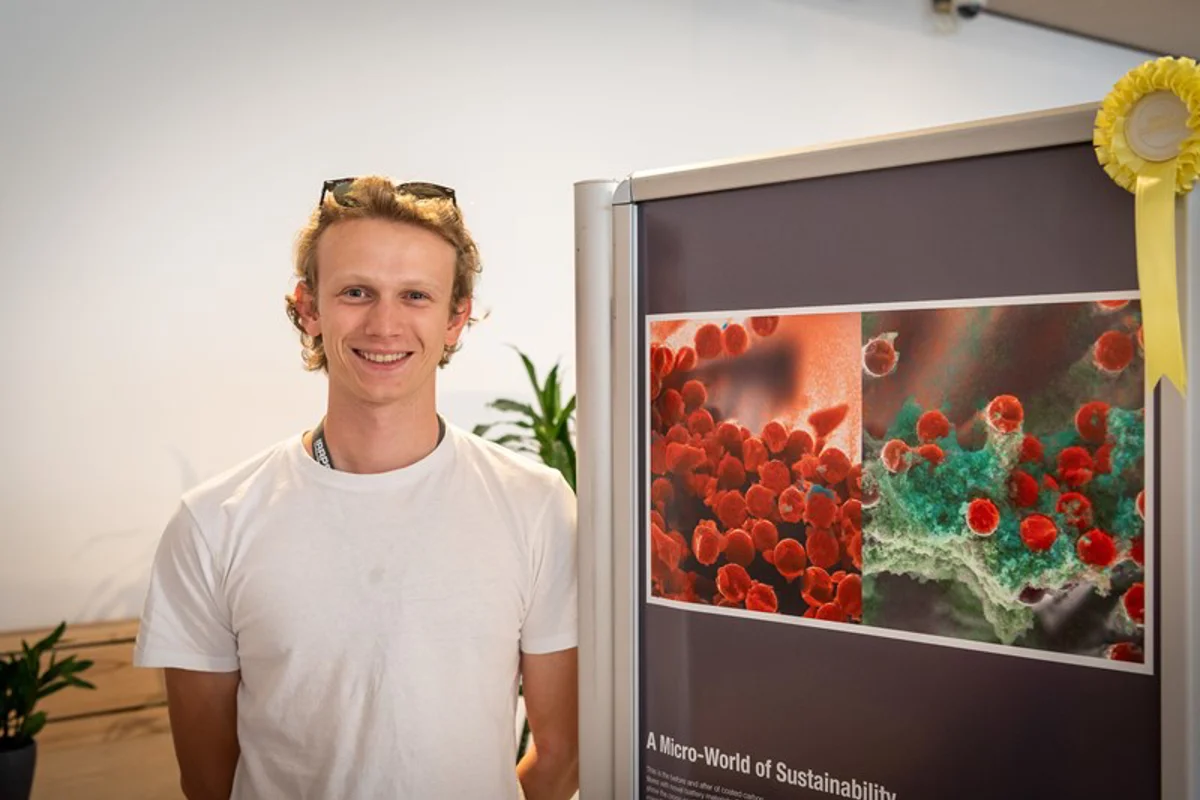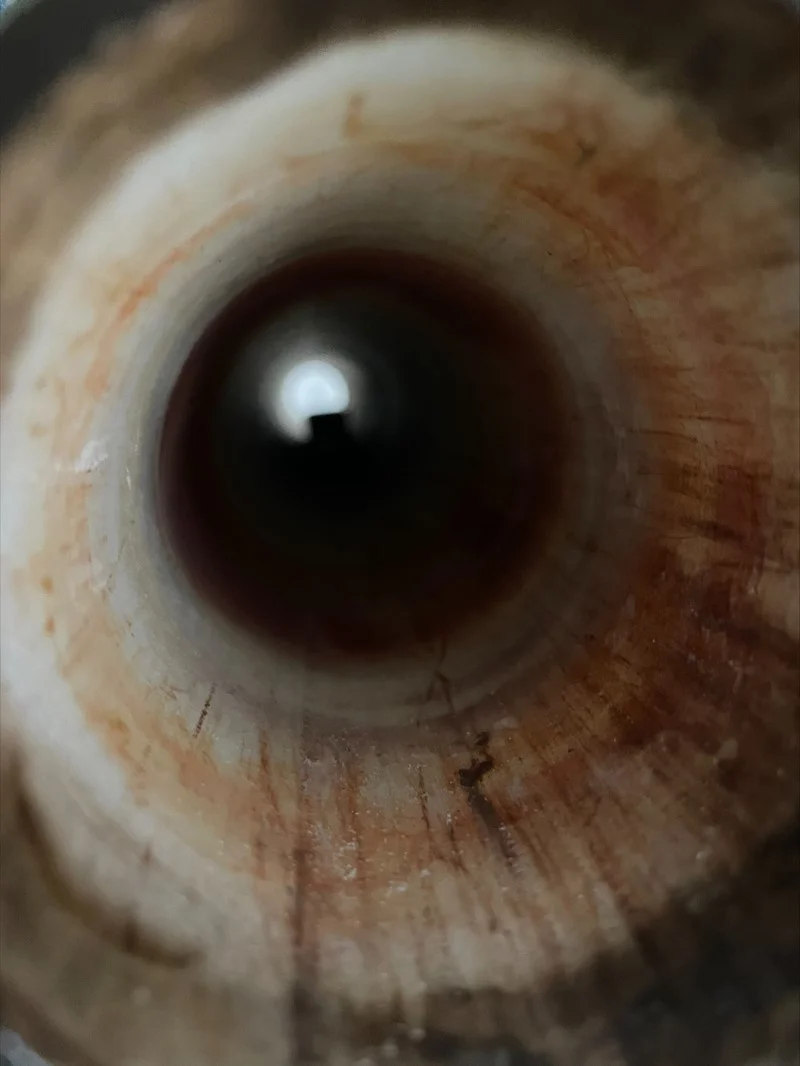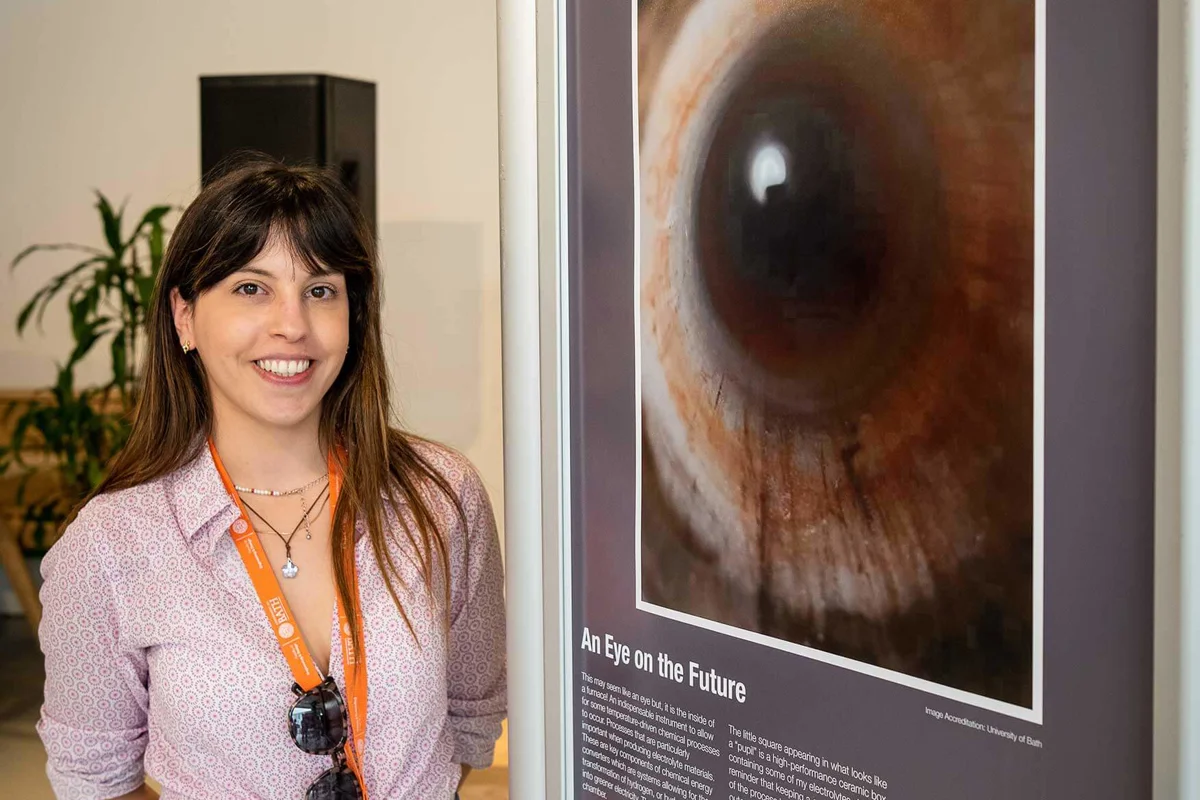Images of Research 2022

The competition invited staff to use visual imagery and a simple short description to tell people about their research and its benefits to society, in five categories that reflected research and strategic themes of the University:
-
-
Digital – research that is creating positive digital futures
-
Health and Wellbeing – research that is addressing pressing health and wellbeing issues people are facing
-
Local – research that is working with people from Bath and North East Somerset and creating positive outcomes for them and their communities
-
Partnerships - research that is working in collaboration with people outside academia including industry, policymakers and civil society and community-based organisations
-
Sustainability – research that is finding sustainable solutions to issues facing the planet and people
-
Our AAPS entries
All 3 of our students images fell into the Sustainability category, with Thomas being highly commended for his Image of Research.
Highly Commended
This is the cross-sectional area before and after coating carbon fibres with novel battery materials. The images are magnified by 1000x using electron imaging and energy dispersive X-rays to determine where and how specific elements have been deposited.
These techniques allow for innovative battery design that is currently being undertaken at the University. Using these insights, we are able to improve and alter techniques and materials to make more sustainable and energy-saving batteries.
This particular work is in the study of structural batteries, where the battery not only stores electrical energy, but also has mechanical strength to reduce the weight required for batteries used in transport.


Rita Prior Filipe - Window to a Sustainable Future
To drastically reduce emissions policymakers and researchers emphasis that a transformation in the way we commute is needed towards adopting collective and shared transportation. Mobility as a Service is a travelling service represented through a mobile app which includes all the available transportation modes and integrates trip planning, ticketing, and paying options. It is expected to produce significant improvements in mobility such as an increase in the use of collective and shared transportation.
This concept has been trialled in urban areas, but there seems to be a hap when it comes to surburban and even rural areas, where, due to the lack of reliable and convenient, transportation options, people rely heavily on the use of their privately owned vehicles. Therefore, to ensure a just and sustainable transition in mobility, there is the need to further investigate the feasibility of implementing this mobility service in a regional context.

Elisabetta Schettino - An Eye on the Future
This may seem like an eye but, it is the inside of a furnace! An indispensable instrument to allow for some temperature-driven chemical processes to occur. Processes that are particularly important when producing electrolyte materials. These are key components of chemical energy converters which are systems allowing for the transformation of hydrogen, or hydrogen carriers, into greener electricity. The "eye" is the furnace chamber.
The little square appearing what looks like a "pupil" is a high-performance ceramic box containing some of my electrolytes. A nice reminder that keeping a careful eye on each step of the process leads to a safe and successful outcome!

There were 38 entries in total, which were whittled down to one winner and one highly commended entry in each of the five categories, the full announcement of winners and commendations is available to read on this page.
All entries are available to view in the Images of Research 2022 Flickr gallery.


